Ball pythons are one of the more popular pet snake species in the United States. These reptiles, while docile by nature, do require a certain amount of care and handling to maintain their health. Corn snakes are also popular pets in America, but they have different needs than ball pythons. Below is a comparison between these two common pet snakes!
What Are Corn Snakes?
What Do Corn Snakes Look Like?
The corn snake (Pantherophis guttatus) is a rat snake from the Southeastern and Central United States that is also known as a North American corn snake [1].
Corn snakes are in the Colubridae family, which contains some of the world’s most poisonous snakes. Although the corn snake has no real venom, it is still one of the most widespread snake species in the pet trade. It’s also one of the most popular snake species in the pet trade, along with ball pythons.
Snakes of this variety are slender-bodied. Even when they reach their maximum length (6 feet), which is very slim and manageable, they are lightweight and simple to handle. Their heads are quite narrow, as well as smooth-scaled.
A corn snake is, by nature, an orange color. They have orange eyes and darker reddish-orange patches or “saddles” down the length of their body. The belly of corn has lovely black and white checkerboard markings.
Corn snake breeders have developed hundreds of distinct morphs. The most common morphs include albino, blood red, caramel, snow, and axanthic (black and white).
Pros:
- They’re docile and pleasant, with a winning personality;
- They don’t grow too big and they retain their ideal size for snakes.
- They’re a lovely hue and come in a variety of colors;
- They can withstand being held for extended periods;
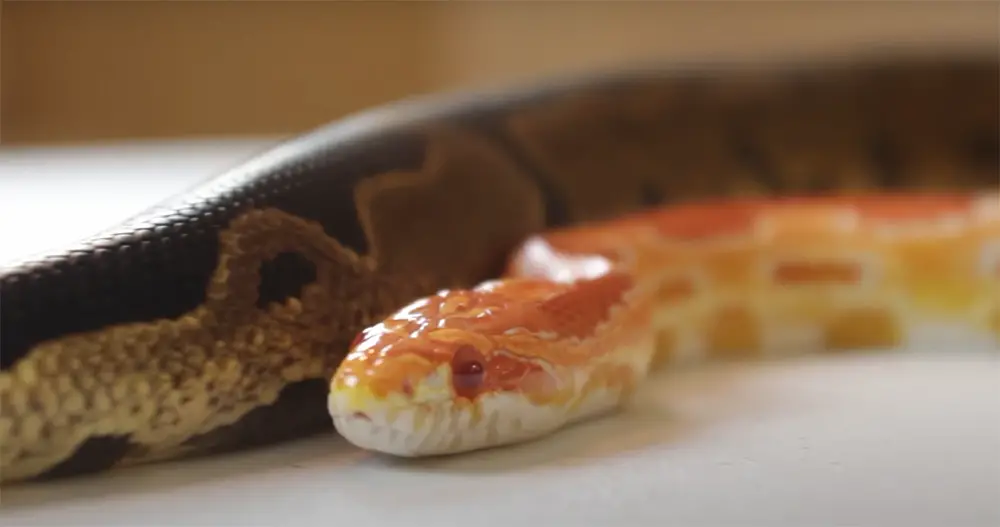
Cons:
- Many kinds of fungal, respiratory, and other diseases and infections are possible;
- If you don’t care for the appearance of newspapers, it may be costly to purchase and replace bedding;
- They need a greater humidity level, but they can withstand temperature swings;
- They can be contaminated with Salmonella;
- It’s unpleasant thawing and reheating their food because constrictors like live prey rather than restricting themselves;
Who Should Buy a Corn Snake?
You should be ready to offer a carnivorous animal and accept that you will be delivering meals that have formerly been living things. You also need to anticipate frequent veterinarian visits, especially if corn snakes are more susceptible to water-borne illnesses, fungi, and other infections than other snakes.
They’re still a long-lived snake, but they aren’t as long-lived as the ball python and are a somewhat less permanent commitment. Nonetheless, if properly cared for, it will continue to be your friend for many years.
Essentially, the same issues as those addressed in the Ball Python section must be evaluated, including the price of your terrarium and the types of long-term care that will be required. Corn snakes, on the other hand, require a little less patience since they’re generally superior and more voracious eaters than the Ball Python and are quite consistent with their eating routines, other than when they’re preparing to slough their skin [2].
What Are Ball Pythons?
What Do Ball Pythons Look Like?
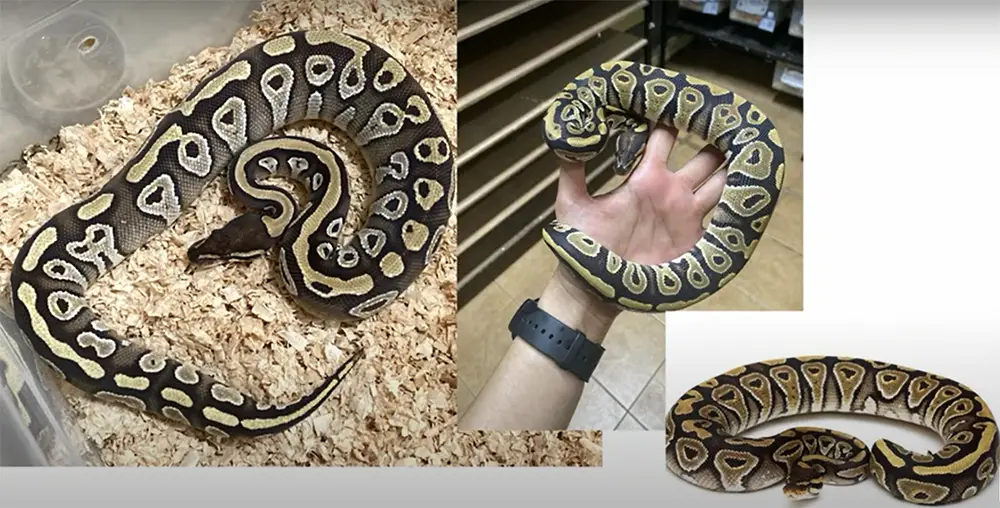
Ball pythons are non-venomous and constrict their meals. They grow to be very short in stature, although females are larger than males.
Ball pythons are a rare snake that you probably won’t encounter in the wild. They’re indigenous to sub-Saharan Africa, ranging from Senegal in the west to Uganda in the east. However, most pet ball pythons are bred in captivity.
In the wild, ball pythons prefer grasslands and savannahs. They may climb trees, but they spend most of their time on the ground. They enjoy hot weather and lots of humidity.
Pros:
- In comparison to a dog or cat, it requires far less upkeep;
- They only consume once every seven days;
- Only defecate once a week, if at all;
- It’s simple to keep the cage clean since it has reptile carpet in the terrarium;
- They might survive up to 30 or even 40 years in captivity (can sometimes be advantageous or disadvantageous);
- Have a laid-back attitude and don’t usually bite unless provoked;
- It’s simple to identify when they’re stressed if they’re in a ball;
- They’re a long-term pet companion;
- They’re not very big, so you won’t squish or harm them. However, they’re large enough to handle comfortably;
- They’re stunning animals that will increase your appreciation for snakes and other reptiles;
Cons:
- When kept too cold or overly agitated, they may be picky eaters;
- Internal parasites must be checked on a yearly basis;
- They’re a long-term companion for you;
- Shy, and they prefer to hide in their cage;
- Can’t be handled once eaten or during digestion, which makes many people irritated;
- They’re nocturnal, and they won’t be too lively during the day;
- If you don’t eat well during the winter, it might be difficult;
- You should purchase your babe python from a reputable breeder rather than a pet store, and this may be difficult;
Who Should Buy a Ball Python?
When getting a snake, the most essential factor to consider is how relaxed you are feeding a carnivore. It might be startling at first to feed them, and many individuals discover quickly that they aren’t prepared to thaw out frozen rodents or kill the creature themselves in order to give it to their pet.
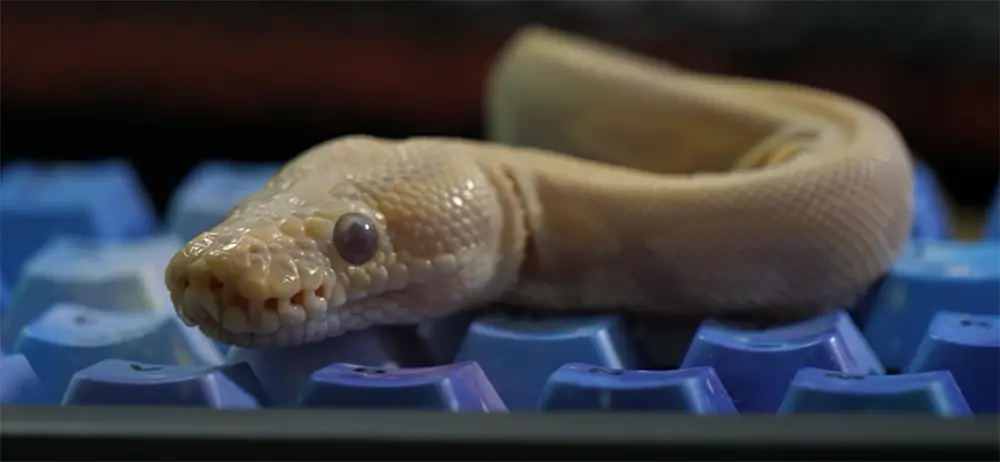
They aren’t only ornamental pets, so you’ll need to be able to handle and hold them at least once a day. They really enjoy being touched by us.
Finally, you should be patient since ball pythons are not known to operate on a human timetable. Night owls will get the most pleasure out of them since they like to be active and moving when the light fades. Furthermore, you may serve food to them and they won’t eat for weeks at a time, but don’t give up hope.
If you don’t allow a few extra days to pass after they’ve eaten, they won’t be able to digest it, and you’ll end up with the same problem all over again. They also shouldn’t be handled until their digestion is finished to avoid any problems.
It’s also crucial to remember that this snake is quite long-lived, and it will usually be with you for a long time. When deciding if you’re ready to commit, and before you start purchasing the necessary supplies, which will be an additional expenditure, ensure that in the next 20-30 years, you’ll still be able to care for your ball python [4].
Corn Snake vs Ball Python: Differences Explained
1) Behavior and Temperament
Corn snakes are hardy reptiles that may live comfortably at room temperature for short periods of time, making them simple to handle and remove from the cage. When these snakes are allowed out of the enclosure, they become active. These snakes are wonderful feeders and are unlikely to bite their owners, making them excellent first-time snakes.
Care should be taken when handling ball pythons since they have a poor tolerance for room temperatures and dryer air. They must never be exposed to temperatures below 70F. Despite their calm disposition, these pythons are hefty and lengthy for their size. When irritated, they become emotional and may abandon their food. They are unlikely to bite unless provoked by another python or human in which case they can become very defensive.
The ball python and corn snake are both docile and hardy reptiles that thrive in a wide range of temperatures and humidity levels. They have different temperature and humidity requirements, so you must be extremely cautious when removing them from their enclosure and handling them.
Corn snakes are great eaters, which means pet owners don’t have to be concerned about their snake refusing to eat, which can happen frequently with ball pythons, especially when frightened [5].
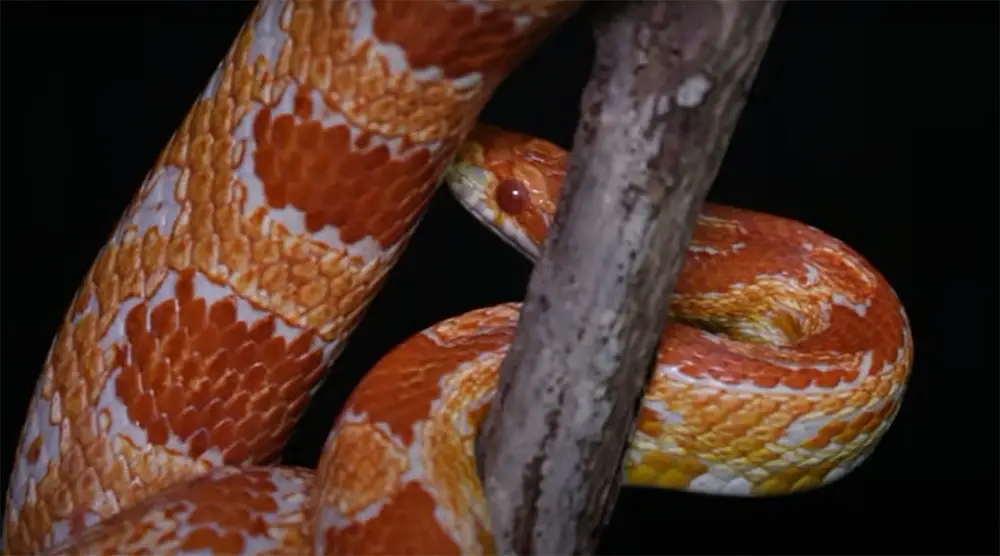
2) Cost
3 major expenses come with keeping these snakes:
- The price of the snake itself (is determined by many factors, including its age, gender, and location);
- The tank and set-up for the snake, as well as heating and shelters;
- The ongoing “running cost” of a snake is the cost of food and substrate (bedding) as well as heating and lighting the vivarium;
A morph may set you back a significant amount of money. Corn snake morphs can cost upwards of $1,000, but ball pythons with special markings might cost more than $15,000.
Corn snakes and ball pythons need a vivarium.
It’s generally recommended that the vivarium be at least as long as your snake’s body in order for it to fit properly. This implies that if you have a corn snake, it will require a bigger enclosure than if you have a ball python. You’ll also need two snake hides, a water basin, and an electric heating pad.
The finest heat source for corn snakes is a heat lamp or an overhead ceramic heat emitter. This is because wild corn snakes like to sunbathe in the wilderness. Ball pythons prefer belly heat from a heating pad. Regardless, you’ll need a thermostat and a hygrometer to regulate it, as well as a thermometer to check the humidity level [6].
3) Handling
When it comes to corn snake vs ball python, both have few problems or need any special care.
Despite the differences in temperament, corn snakes are quite similar. First and foremost, corn snakes are sociable and pleasant. It’s also unusual for a Corn Snake to bite people or get furious/violent. Even if a corn snake stings or attempts to bite someone, it is extremely uncommon for it to cause any damage or break the skin.
Corn snakes are more difficult to handle than other snakes, but this is a significant benefit. They are typically less complicated to handle and require less protection when removed from their habitat.
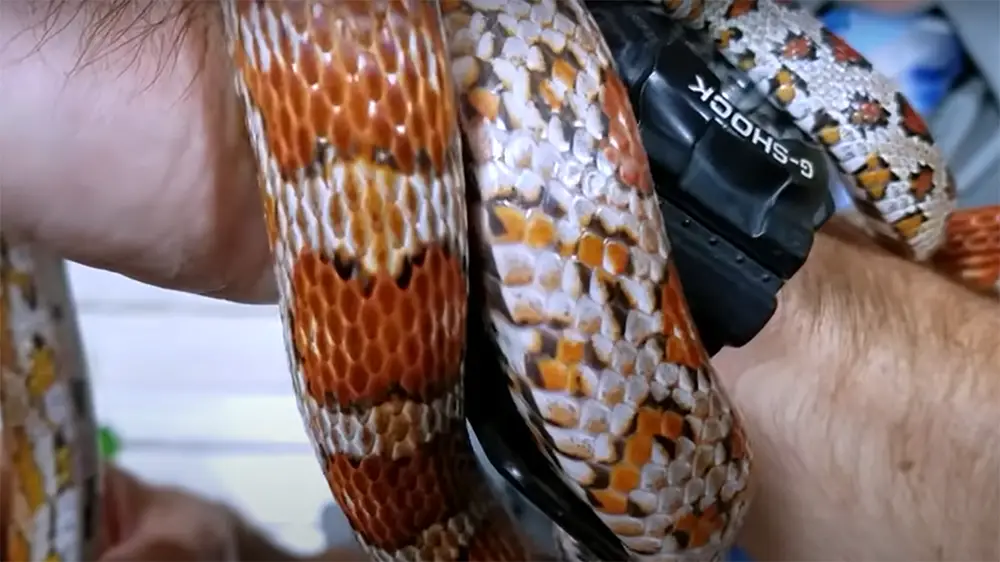
The ball python, on the other hand, is a far more nervous animal. They are quieter and can have aggressive moods when handled. Because of their natural disposition, ball pythons are more retiring animals. They prefer to hide away in dead trees or under any type of cover, which may be rather painful if they bite you! Bites by Ball Pythons are somewhat infrequent; nevertheless, they do occur and can be quite harsh.
Ball pythons are difficult to handle when compared to corn snakes since they tend to be more challenging to handle. Despite the fact that they may be a bit more difficult to manage than corn snakes, ball pythons are still fantastic pets for novices.
Whether you go for a corn snake or a ball python, it’s critical to handle them on a regular basis and pay attention to behavioral cues. The ideal approach is to handle your snake at least twice each week.
Don’t get corn snake and ball python food in your hands before or after feeding.
Finally, pay attention to what your snake is trying to tell you. If the snake wags its tail at you, coils up, or appears stressed, take some time for it to calm down and attempt to handle it again later. They will generally be overjoyed to see you. You may sometimes startle them, causing them to go into defense mode [7].
4) Lifespan
In nature, most ball pythons live for ten years, with exceptional cases extending that to up to 12 years. Most wild ball pythons are fortunate to see eight years in the wild due to predator danger and other factors.
Corn snakes have a similar lifespan to other rat snakes. They rarely live past 6 years in the wild.
Corn snakes can live for 15-20 years in captivity, where they have devoted snake owners to meet all of their requirements. The oldest known corn snake survived 32 years and 3 months.
If you don’t want a snake that lives a long time, a corn snake is preferable [8].
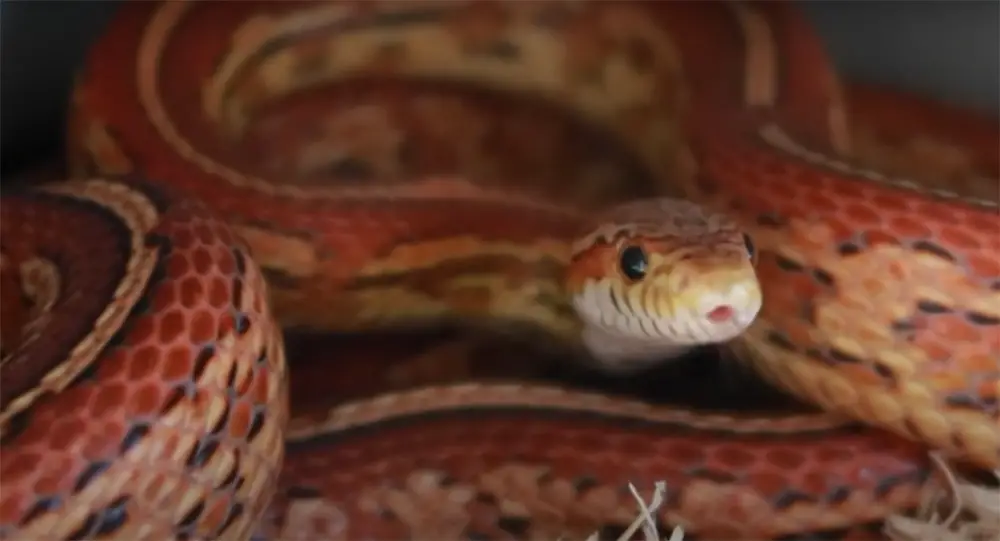
5) Overall Size
The average length of a ball python is 3-3.5 feet when grown. The males are generally shorter at 3-3.5 feet, while females can grow up to 4-4.5 feet long. Because they have a weighty build, they may develop into rather thick and hefty animals. They can weigh up to 5 pounds when full-grown.
Corn snakes can grow much bigger than that. If properly cared for, both males and females might reach up to 6 feet in length. Corn snakes are light-bodied snakes, so even the longest ones don’t weigh more than about 2 pounds. If you’re looking for a smaller snake to start with, a male ball python is your best option [9].
6) Ball Python vs. Corn Snake Bite
Corn snakes and ball pythons seldom bite. A ball python’s bite is nothing to joke about, and it might be a bad experience, but it’s unlikely to be as painful as you believe. Corn snake bites are likewise non-venomous, though they may sting.
Although neither snake is likely to bite you, a ball python’s bite can do somewhat more harm than that of a corn snake.
It’s because both snakes are constrictors that they’re so similar. They have backward-curved teeth, which aid in the grip of their prey as they constrict it.
When a snake bites you, it’s usually because it is constricting. Snakes that bite once as a warning then let go are known as constrictors.
You can inflict serious harm by yanking them off if they latch on to you since this will just produce more damaged flesh.
Instead, it’s advisable to wait for the snake to release, which happens very quickly in most cases.
In either species, you’ll undoubtedly feel some discomfort and a set of smooth curved tooth marks. The main difference is that a ball python will make larger bite traces [10].
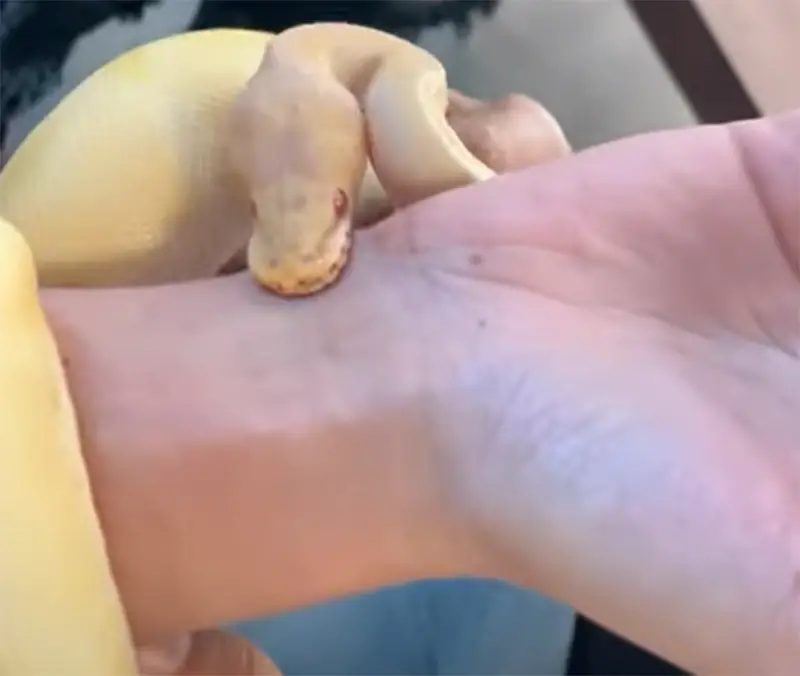
7) Enclosure Size and Setup
You should first measure the dimensions of your ball pythons or corn snakes before creating an enclosure.
In comparison, corn snakes are tiny, and an adult can survive in a cage measuring approximately 30 inches long, 12 inches broad, and 12 inches tall.
The ball pythons are typically much larger than your typical python. Because they’re a lot more massive, they require a bigger enclosure.
For an adult, you should provide a cage with a length of 36 inches, a width of 18 inches, and a height of 16 inches.
There’s also a nuance in the humidity requirements for the two snakes.
Corn snakes require a higher humidity level than ball pythons. The humidity levels for corn snakes should be about 65 percent, whereas those for ball pythons are around 50 percent.
The temperature range, on the other hand, varies somewhat.
Adult snakes require a temperature range of 75 to 82F on the cool side of their enclosure and 80 to 85F on the warm side.
Python snakes need a temperature range of 75-80F on the cool side of their enclosure and 88-92F on the warm side [11].
8) Appropriate Prey Items
In the wild, ball pythons consume rodents that are native to Africa, such as African soft-furred rats. Corn snakes consume a variety of mice and rats, as well as some smaller reptiles and amphibians.
Captive snake owners should give their pets frozen-thawed rodents on a regular basis. Mice are the diet of choice for corn snakes. Rats are optimal food for ball pythons because they are larger and more suitable to the size of a ball python’s body. Adults should be fed once every 1-2 weeks, according to species.
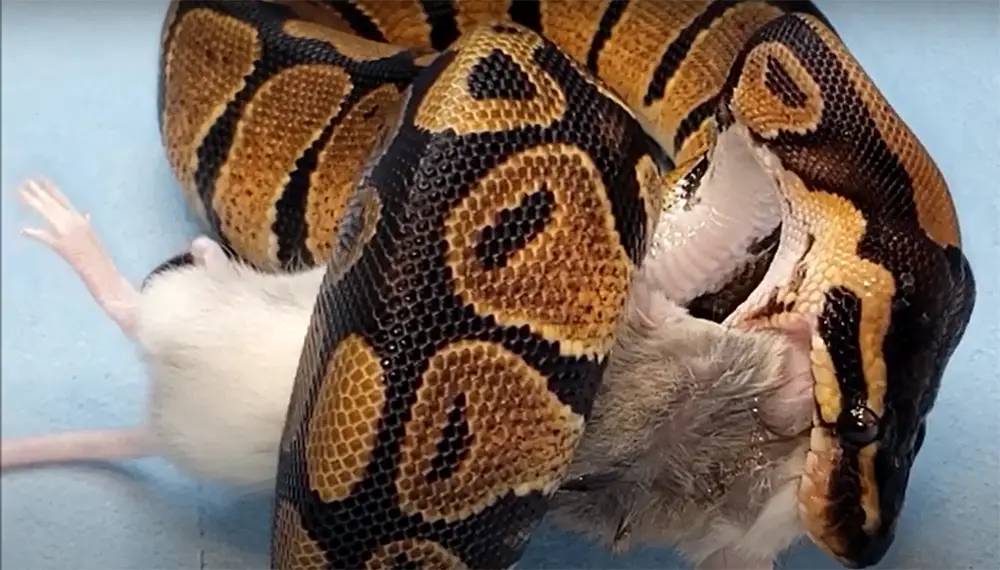
Feeder rats are pricier than mice. Ball pythons, on the other hand, can be picky eaters. It’s occasionally difficult to get them to consume frozen-thawed food. Corn snakes are easier to feed than ball pythons because they’re colder and need less attention.
9) Physical Appearance
Corn snakes and ball pythons are two distinct snake species. Corn snakes have tiny heads and fairly thin bodies. In contrast, Ball Pythons have diamond-shaped heads and get quite thick in their main body as they age. Both species also come in a number of different “forms”. If you’re a beginner with snake keeping, you might be unfamiliar with the term “morph”.
Essentially, most snakes of the same species may be bred to appear quite different, owing to their distinct markings, colors, and so on. These color patterns are called “morphs”.
Brown and black is the standard color for fancy ball pythons, whereas corn snakes are orange and brown. Both of these common “morphs” are often the cheapest [12].
The most common morphs for ball pythons:
- Acid;
- Albino;
- Asphalt Specter;
- Bumblebee;
- Banana;
- Calico;
- Enchi Vanilla;
The most common morphs for corn snakes:
- Albino;
- Black;
- Lavender;
- Okeetee;
10) Ease of Care
No matter which kind of snake you choose, you’ll need to properly care for them. This entails:

- Cleaning and refilling their water bowl on a daily basis;
- Daily cleaning of the snake’s environment, removing droppings and urates;
- Every three to four weeks, clean the vivarium and replenish the substrate;
- Maintaining the appropriate temperature and humidity levels;
- If you’re worried about their health, take them to the veterinarian;
Corn snakes, on the other hand, require a higher temperature and humidity level than ball pythons.
The humidity level in a ball python vivarium should be 60%. A big water dish may be used to keep the humidity at a reasonable level, and if it drops too low, spraying the air is advised. The temperature should range from 78F to 96F.
In order for corn snakes to thrive, ensure their humidity levels are between 40 and 50%. This is about the same humidity level as most homes in the United States, so it’s simple to achieve. The warm end of the cage should be no less than 85F, while the cool end should be no more than 70F.
It’s somewhat easier to maintain a corn snake’s environment than a ball python’s, as both snakes require similar levels of attention. When they shed, both snakes will need more humidity [13].
11) Potential Health Problems
Snakes, like other creatures, can become sick from time to time. Snakes are occasionally ill because of poor care. The following are some examples of common health issues in ball pythons and corn snakes:
- Respiratory infection. This generally occurs as a result of incorrect temperature and humidity levels;
- Stress. A stressed snake’s scales can be raised, giving it a glassy appearance. This frequently happens after the snake is handled too soon after eating or when its meal was too big to digest;
- Parasite infections, including mites and ticks;
- Mouth rot (also called infectious stomatitis). Mouth rot is frequently induced by immune compromise in snakes as a result of poor husbandry;
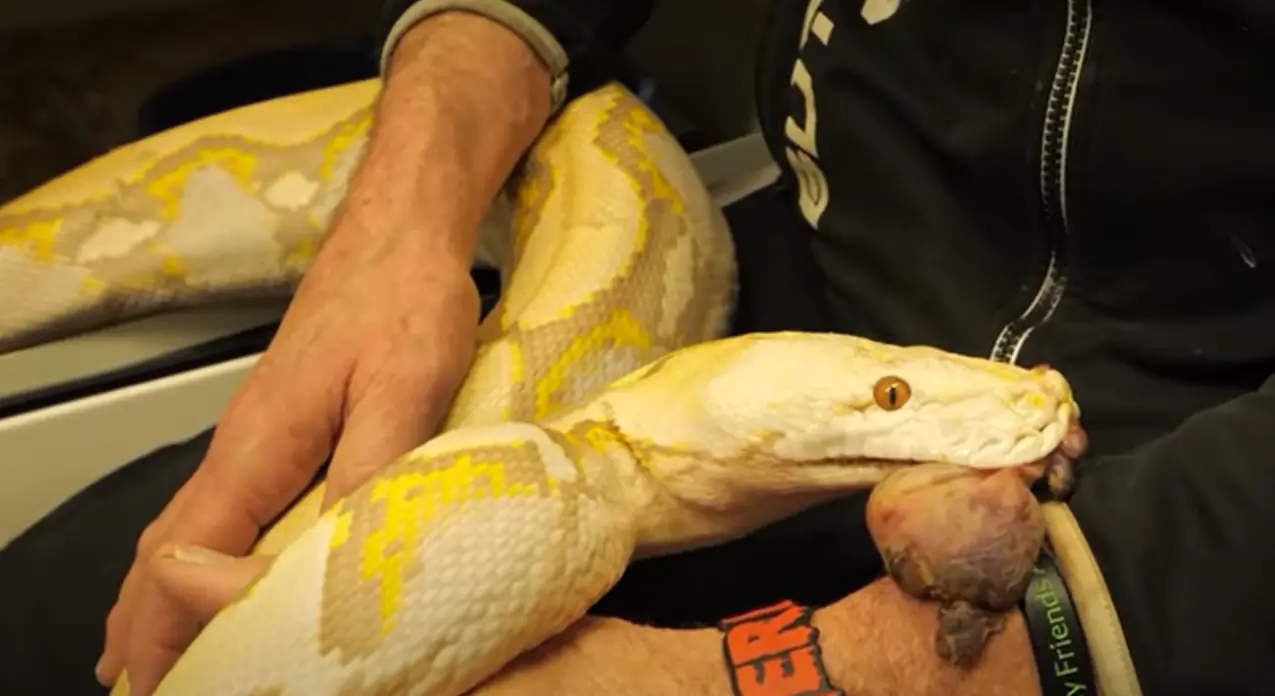
- Stuck shed (also called dysecdysis). When humidity levels are too low for snakes to shed their skin properly, this condition occurs;
- Scale rot. The belly scales are susceptible to bacterial infection, known as scale rot, which is brought on by wetness;
- Burns. Heat rocks malfunctioning is to blame;
- Inclusion Body Disease (IBD) is a potentially fatal illness that can affect ball pythons (the same is for all boas). Corn snakes, on the other hand, are more susceptible to disorders like scale rot caused by high humidity;
The Best First Snake Among These Two Species
If you’re searching for the ideal snake to be your first pet, both ball pythons and corn snakes are wonderful choices. The greatest initial snake for you is determined by your level of comfort with big animals.
Many individuals advocate the corn snake as the ideal first snake. Their tiny size makes them simple to care for, allowing you to get acquainted with keeping snakes as pets.
The Easiest Snake to Care For
You must be wondering if a corn snake or a ball python is easier to keep. There’s no way to know whether one snake is more simple to maintain than the other.
Because they are smaller and simpler to handle than ball pythons, corn snakes are more convenient to care for.
Aside from the fact that ball pythons are considerably larger, require proportionately more space, and create more waste than other snakes, their treatment standards are fairly similar.
In that sense, a corn snake is the most straightforward snake to care for. Ball pythons may provide some additional difficulties for the novice keeper.
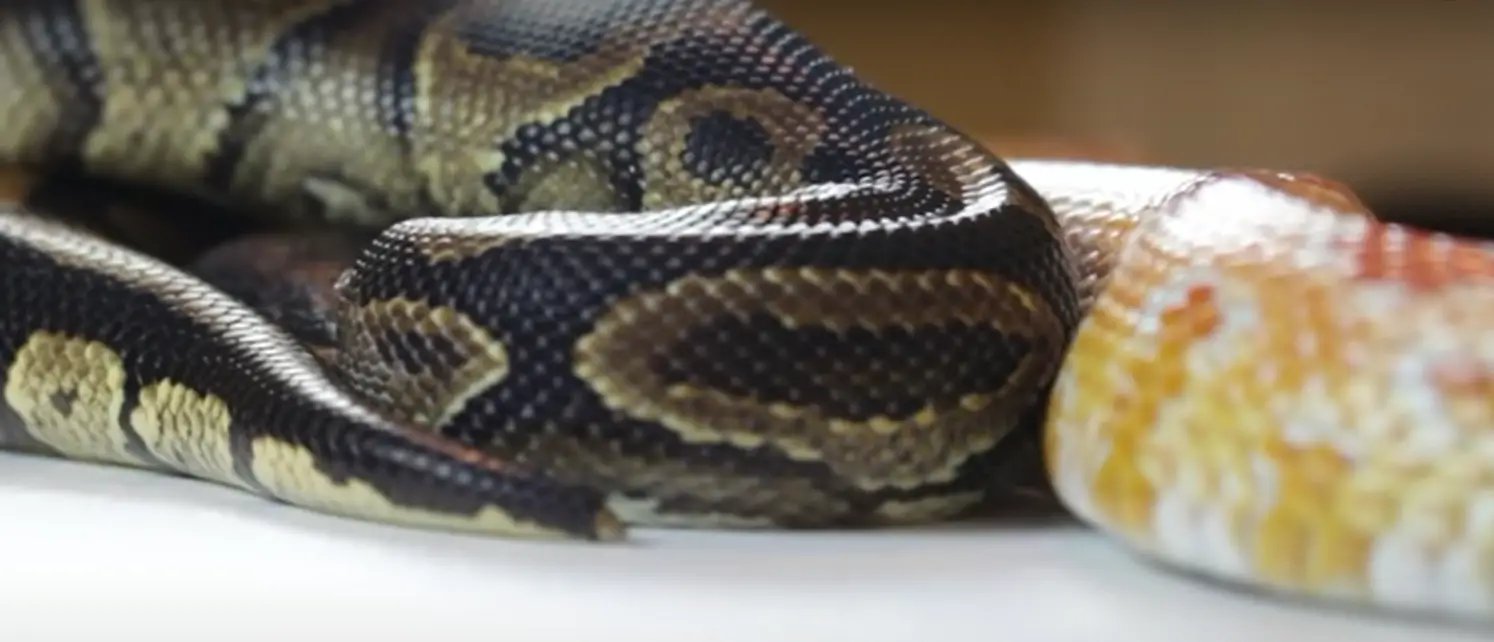
Corn snakes are delicate to heat and humidity, picky eaters that may have difficulties shedding, and susceptible to stress. Corn snakes are unlikely to suffer from any of these problems.
Can Corn Snakes and Ball Pythons Live Together?
Definitely not! In this circumstance, all you can hope for is one dead snake (probably the corn snake) and one wounded snake (corn snakes don’t go down without a fight).
If you want to keep both a corn snake and a ball python, the sane option is to provide each with its own cage.
FAQ
1. Are corn snakes easier than ball pythons?
Ball pythons are often less difficult to handle and require lesser caution when moved from their enclosure. In contrast, ball pythons are timider, can demonstrate aggressive behavior, and need more patience and attention in order to be handled.
2. Are corn snakes or ball pythons better for beginners?
If you’re not afraid of ball pythons, they’re not difficult to handle. Corn snakes are a wonderful choice for individuals who are uncomfortable with big reptiles because they are smaller and easier to get started with. Because it is smaller and a better introduction to large animals, the corn snake is a good option for first-time snake owners [14].
3. Has a ball python killed anyone?
It’s exceedingly rare for pythons to kill people, but it is not unheard of. It can happen if the circumstances are perfect. Frequently, it’s just kind of a perfect storm where you have a huge hungry snake in close proximity to humans. Humans are not, however, normally part of these snakes’ natural diet [15].
4. Do ball pythons like to be held?
Some ball pythons enjoy being held, while others don’t or simply aren’t [16].
5. Can ball pythons share a tank?
While two ball pythons can cohabit a tank, this is not advised. Too many things could go wrong, and ball pythons are notoriously antisocial, to begin with. Putting the two snakes in the same cage might lead to illnesses, tension, feeding problems, and even cannibalism [17].
6. Can two baby corn snakes live together?
It’s not possible for two adult snakes of the same species to cohabit unless they are from different families or have been specifically introduced. Never house immature corn snakes together until they are older and able to breed. Feed them separately (so the dominant snake doesn’t take food from the subordinate one) [18].
Useful Video: Ball Pythons VS Corn Snakes: Which are Better Pets?
References:
- https://reptile.guide/corn-snake-vs-ball-python/#What-Are-Corn-Snakes
- https://wildlifeinformer.com/ball-python-vs-corn-snake/
- https://reptile.guide/corn-snake-vs-ball-python
- https://wildlifeinformer.com/ball-python-vs-corn-snake/
- https://thepetenthusiast.com/corn-snake-vs-ball-python-as-pets-which-one-is-better/
- https://www.snakesforpets.com/corn-snake-vs-ball-python/
- https://happyserpent.com/snake-information/corn-snake-vs-ball-python/
- https://reptile.guide/corn-snake-vs-ball-python
- https://www.snakesforpets.com/corn-snake-vs-ball-python/
- https://reptile.guide/corn-snake-vs-ball-python
- https://reptile.guide/corn-snake-vs-ball-python
- https://happyserpent.com/snake-information/corn-snake-vs-ball-python/
- https://www.snakesforpets.com/corn-snake-vs-ball-python/
- https://reptile.guide/corn-snake-vs-ball-python/
- https://www.nationalgeographic.com/animals/article/130806-python-strangles-kids-canada-snakes
- https://ballpythonbreeder.co.uk/2021/06/15/do-ball-pythons-like-to-be-held/
- https://petkeen.com/can-ball-pythons-live-together/
- https://vivariumworld.co.uk/blog/can-two-corn-snakes-kept-together

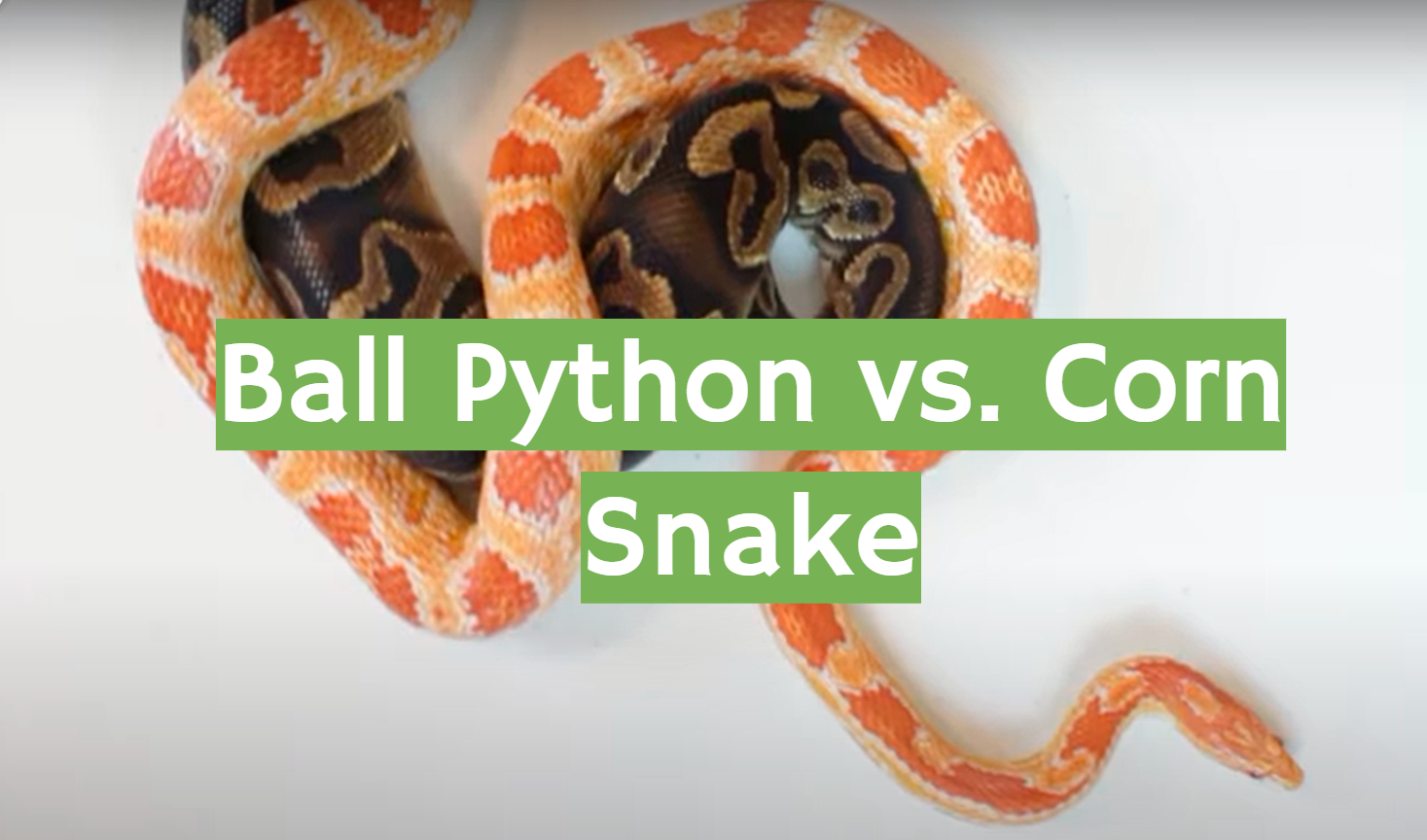
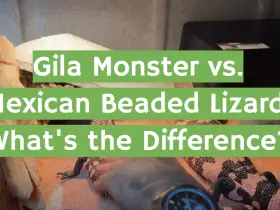

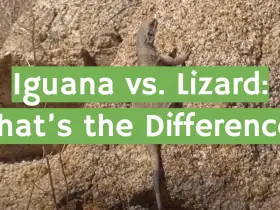
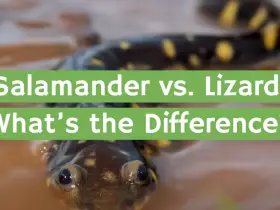
Leave a Review